Ventriculo-peritoneal shunting devices for hydrocephalus
- PMID: 32542676
- PMCID: PMC7388891
- DOI: 10.1002/14651858.CD012726.pub2
Ventriculo-peritoneal shunting devices for hydrocephalus
Abstract
Background: Hydrocephalus is a common neurological disorder, caused by a progressive accumulation of cerebrospinal fluid (CSF) within the intracranial space that can lead to increased intracranial pressure, enlargement of the ventricles (ventriculomegaly) and, consequently, to brain damage. Ventriculo-peritoneal shunt systems are the mainstay therapy for this condition, however there are different types of shunt systems.
Objectives: To compare the effectiveness and adverse effects of conventional and complex shunt devices for CSF diversion in people with hydrocephalus.
Search methods: We searched the Cochrane Central Register of Controlled Trials (2020 Issue 2); Ovid MEDLINE (1946 to February 2020); Embase (Elsevier) (1974 to February 2020); Latin American and Caribbean Health Science Information Database (LILACS) (1980 to February 2020); ClinicalTrials.gov; and World Health Organization International Clinical Trials Registry Platform.
Selection criteria: We selected randomised controlled trials or quasi-randomised trials of different types of ventriculo-peritoneal shunting devices for people with hydrocephalus. Primary outcomes included: treatment failure, adverse events and mortality.
Data collection and analysis: Two review authors screened studies for selection, assessed risk of bias and extracted data. Due to the scarcity of data, we performed a Synthesis Without Meta-analysis (SWiM) incorporating GRADE for the quality of the evidence.
Main results: We included six studies with 962 participants assessing the effects of standard valves compared to anti-syphon valves, other types of standard valves, self-adjusting CSF flow-regulating valves and external differential programmable pressure valves. All included studies started in a hospital setting and offered ambulatory follow-up. Most studies were conducted in infants or children with hydrocephalus from diverse causes. The certainty of the evidence for most comparisons was low to very low. 1. Standard valve versus anti-syphon valve Three studies with 296 randomised participants were included under this comparison. We are uncertain about the incidence of treatment failure in participants with standard valve and anti-syphon valves (very low certainty of the evidence). The incidence of adverse events may be similar in those with standard valves (range 0 to 1.9%) and anti-syphon valves (range 0 to 2.9%) (low certainty of the evidence). Mortality may be similar in those with standard valves (0%) and anti-syphon valves (0.9%) (RD 0.01%, 95% CI -0.02% to 0.03%, low certainty of the evidence). Ventricular size and head circumference may be similar in those with standard valves and anti-syphon valves (low certainty of the evidence). None of the included studies reported the quality of life of participants. 2. Comparison between different types of standard valves Two studies with 174 randomised participants were included under this comparison. We are uncertain about the incidence of treatment failure in participants with different types of standard valves (early postoperative period: RR 0.41, 95% CI 0.13 to 1.27; at 12 months follow-up: RR 1.17, 95% CI 0.72 to 1.92, very low certainty of the evidence). None of the included studies reported adverse events beyond those included under "treatment failure". We are uncertain about the effects of different types of standard valves on mortality (range 2% to 17%, very low certainty of the evidence). The included studies did not report the effects of these interventions on quality of life, ventricular size reduction or head circumference. 3. Standard valve versus self-adjusting CSF flow-regulating valve One study with 229 randomised participants addressed this comparison. The incidence of treatment failure may be similar in those with standard valves (42.98%) and self-adjusting CSF flow-regulating valves (39.13%) (low certainty of the evidence). The incidence of adverse events may be similar in those with standard valves (range 0 to 1.9%) and those with self-adjusting CSF flow-regulating valves (range 0 to 7.2%) (low certainty of the evidence). The included study reported no deaths in either group in the postoperative period. Beyond the early postoperative period, the authors stated that nine patients died (no disaggregated data by each type of intervention was available, low certainty of the evidence). The included studies did not report the effects of these interventions on quality of life, ventricular size reduction or head circumference. 4. External differential programmable pressure valve versus non-programmable valve One study with 377 randomised participants addressed this comparison. The incidence of treatment failure may be similar in those with programmable valves (52%) and non-programmable valves (52%) (RR 1.02, 95% CI 0.84 to 1.24, low certainty of the evidence). The incidence of adverse events may be similar in those with programmable valves (6.19%) and non-programmable valves (6.01%) (RR 0.97, 95% CI 0.44 to 2.15, low certainty of the evidence). The included study did not report the effect of these interventions on mortality, quality of life or head circumference. Ventricular size reduction may be similar in those with programmable valves and non-programmable valves (low certainty of the evidence).
Authors' conclusions: Standard shunt valves for hydrocephalus compared to anti-syphon or self-adjusting CSF flow-regulating valves may cause little to no difference on the main outcomes of this review, however we are very uncertain due to the low to very low certainty of evidence. Similarly, different types of standard valves and external differential programmable pressure valves versus non-programmable valves may be associated with similar outcomes. Nevertheless, this review did not include valves with the latest technology, for which we need high-quality randomised controlled trials focusing on patient-important outcomes including costs.
Copyright © 2020 The Cochrane Collaboration. Published by John Wiley & Sons, Ltd.
Conflict of interest statement
SAPM ‐ none.
VV ‐ none.
LIG ‐ none.
JVAF ‐ none.
AC ‐ none.
VG ‐ none.
Figures


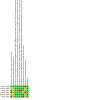
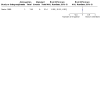
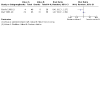
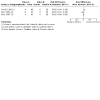


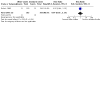
Update of
References
References to studies included in this review
Drake 1998 {published data only}
-
- Drake JM, Kestle J, Boop F, Cochrane D, Haines S, Sainte-Rose C, et al. Rationale and methodology of the multicenter pediatric cerebrospinal fluid shunt design trial. Child's Nervous System 1996;12(8):434-47. - PubMed
-
- Drake JM, Kestle J. Determining the best cerebrospinal fluid shunt valve design: the pediatric valve design trial. Neurosurgery 1996;38(3):604-7. - PubMed
-
- Drake JM, Kestle JR, Milner R, Cinalli G, Boop F, Piatt J, et al. Randomized trial of cerebrospinal fluid shunt valve design in pediatric hydrocephalus. Neurosurgery 1998;43(2):294-303; discussion 303. - PubMed
-
- Kestle J, Drake J, Milner R, Sainte-Rose C, Cinalli G, Boop F, et al. Long-term follow-up data from the Shunt Design Trial. Pediatric Neurosurgery 2000;33(5):230-6. - PubMed
-
- Kestle J, Milner R, Drake D. An assessment of observer bias in the Shunt Design trial. Pediatric Neurosurgery 1999;30(2):57-61. - PubMed
Garcia 1988 {published data only}
-
- Garcia de Llano VCA, Mateos GJH, Kleriga GE. Estudio comparativo de dos sistemas para la derivacion del liquido cefalorraquideo en hidrocefalea. Revista Médica del Instituto Mexicano del Seguro Social 1988;26(3/4):199-204.
Khan 2010 {published data only}
-
- Khan RA, Narasimhan KL, Tewari MK, Saxena AK. Role of shunts with antisiphon device in treatment of pediatric hydrocephalus. Clinical Neurology and Neurosurgery 2010;112(8):687-90. - PubMed
Liniger 2003 {published data only}
-
- Kaiser GL, Horner E, Marchand S, Jost A. Conventional versus Delta valve in the treatment of hydrocephalus in early infancy. European Journal of Pediatric Surgery 1997;7 Suppl 1:45-6. [PMID: ] - PubMed
-
- Liniger P, Marchand S, Kaiser GL. Flow control versus antisiphon valves: late results concerning slit ventricles and slit-ventricle syndrome. European Journal of Pediatric Surgery 2003;13 Suppl 1:S3-6. - PubMed
Pollack 1999 {published data only}
-
- Carmel PW, Albright AL, Adelson PD, Canady A, Black P, Boydston W, et al. Incidence and management of subdural hematoma/hygroma with variable- and fixed-pressure differential valves: a randomized, controlled study of programmable compared with conventional valves. Neurosurgical Focus 1999;7(4):e7. - PubMed
-
- Pollack IF, Albright AL, Adelson PD. A randomized, controlled study of a programmable shunt valve versus a conventional valve for patients with hydrocephalus. Neurosurgery 1999;45(6):1399-411. - PubMed
Warf 2005 {published data only}
-
- Warf BC. Comparison of 1-year outcomes for the Chhabra and Codman-Hakim Micro Precision shunt systems in Uganda: a prospective study in 195 children. Journal of Neurosurgery 2005;102(Suppl 4):358-62. - PubMed
References to studies excluded from this review
Agarwal 2018 {published data only}
-
- Agarwal N, Kashkoush A, McDowell MM, Lariviere WR, Ismail N, Friedlander RM. Comparative durability and costs analysis of ventricular shunts. Journal of Neurosurgery 2018;130(5):1-8. - PubMed
ASERNIP‐S 2014 {published data only}
-
- Australian Safety and Efficacy Register of New Interventional Procedures - Surgical. Miethke proSA® adjustable gravitational shunt for hydrocephalus (structured abstract). Health Technology Assessment Database 2014.
Baird 2014 {published data only}
-
- Baird LC, Mazzola CA, Auguste KI, Klimo P, Flannery AM. Pediatric hydrocephalus: systematic literature review and evidence-based guidelines. Part 5: Effect of valve type on cerebrospinal fluid shunt efficacy. Journal of Neurosurgery: Pediatrics 2014;14:35-43. - PubMed
Beez 2014 {published data only}
-
- Beez T, Sarikaya-Seiwert S, Bellstadt L, Muhmer M, Steiger H-J. Role of ventriculoperitoneal shunt valve design in the treatment of pediatric hydrocephalus - a single center study of valve performance in the clinical setting. Child's Nervous System 2014;30(2):293-7. - PubMed
Czosnyka 1990 {published data only}
-
- Czosnyka M, Maksymowicz W, Batorski L, Koszewski W, Czosnyka Z. Comparison between classic-differential and automatic shunt functioning on the basis of infusion tests. Acta Neurochirurgica 1990;106(1-2):1-8. - PubMed
Czosnyka 2000 {published data only}
-
- Czosnyka Z, Czosnyka M, Copeman J, Pickard JD. A randomized, controlled study of a programmable shunt valve versus a conventional valve for patients with hydrocephalus (multiple letters). Neurosurgery 2000;47(5):1250-1. - PubMed
Czosnyka 2002 {published data only}
-
- Czosnyka ZH, Czosnyka M, Pickard JD. Shunt testing in-vivo: a method based on the data from the UK shunt evaluation laboratory. Acta Neurochirurgica 2002;81(Suppl):27-30. - PubMed
Decq 1995 {published data only}
-
- Decq P, Barat JL, Duplessis E, Leguerinel C, Gendrault P, Keravel Y. Shunt failure in adult hydrocephalus: flow-controlled shunt versus differential pressure shunts - a cooperative study in 289 patients. Surgical Neurology 1995;43(4):333-9. - PubMed
Del Bigio 1998 {published data only}
-
- Del Bigio MR. Biological reactions to cerebrospinal fluid shunt devices: a review of the cellular pathology. Neurosurgery 1998;42(2):319-26. - PubMed
Drake 1996 {published data only}
-
- Drake JM, Kestle J: Pediatric Hydrocephalus Treatment Evaluation Group. Rationale and methodology of the multicenter pediatric cerebrospinal fluid shunt design trial. Child's Nervous System 1996;12(8):434-47. - PubMed
Drake 1998a {published data only}
-
- Drake JM, Kestle JT. Determining the best cerebrospinal fluid shunt valve design: the pediatric Valve Design trial. Neurosurgery 1998;43(5):1259-60. - PubMed
Drake 2000 {published data only}
-
- Drake JM, Kestle JR, Tuli S. CSF shunts 50 years on - past, present and future. Child's Nervous System 2000;16(10-11):800-4. - PubMed
Eymann 2007 {published data only}
-
- Eymann R, Steudel WI, Kiefer M. Pediatric gravitational shunts: initial results from a prospective study. Journal of Neurosurgery 2007;106(3 Suppl):179-84. - PubMed
Felix 1983 {published data only}
-
- Felix Estrada G, Loyo Varela M, Mateos Gomez JH, Leo R, Kleriga E. Nuevo sistema valvular de Felix. Regulador de la presion intracraneal para el control de hidrocefalia. Cirugia y Cirujanos 1983;51(6):473-7.
Gruber 1984 {published data only}
-
- Gruber R, Jenny P, Herzog B. Experiences with the anti-siphon device (ASD) in shunt therapy of pediatric hydrocephalus. Journal of Neurosurgery 1984;61(1):156-62. - PubMed
Haberl 2009 {published data only}
-
- Haberl EJ, Messing-Juenger M, Schuhmann M, Eymann R, Cedzich C, Fritsch MJ, et al. Experiences with a gravity-assisted valve in hydrocephalic children. Journal of Neurosurgery (Pediatrics) 2009;4(3):289-94. - PubMed
Higashi 1994 {published data only}
-
- Higashi S, Futami K, Matsuda H, Yamashita J, Hashimoto M, Hasegawa M, et al. Effects of head elevation on intracranial hemodynamics in patients with ventriculoperitoneal shunts. Journal of Neurosurgery 1994;81(6):829-36. - PubMed
Hoshide 2017 {published data only}
Ito 2012 {published data only}
-
- Ito M, Houkin K, Saito H, Shimbo D, Motegi H, Kawabori M, et al. Systematic review of complications for proper informed consent: (4) cerebrospinal fluid shunts for hydrocephalus and related disorders. Journal of Neurological Surgery 2012;40(10):923-45. - PubMed
Jain 2005 {published data only}
-
- Jain H, Natarajan K, Sgouros S. Influence of the shunt type in the difference in reduction of volume between the two lateral ventricles in shunted hydrocephalic children. Child's Nervous System 2005;21(7):552-8. - PubMed
Kiefer 2000 {published data only}
-
- Kiefer M, Eymann R, Mascaros V, Walter M, Steudel WI. Significance of hydrostatic valves in therapy of chronic hydrocephalus [Der Stellenwert Hydrostatischer ventile in der therapie des chronischen hydrozephalus]. Der Nervenarzt 2000;71(12):975-86. - PubMed
Legat 1996 {published data only}
-
- Legat JA, Eder HG, Oberbauer RW. Over-drainage by hydrocephalus: comparative study of Orbis Sigma and Delta shunt systems. Zentralblatt fur Neurochirurgie 1996;57 Suppl:9.
Li 2017 {published data only}
-
- Li M, Wang H, Ouyang Y, Yin M, Yin X. Efficacy and safety of programmable shunt valves for hydrocephalus: a meta-analysis. International Journal of Surgery (London, England) 2017;44:139-46. - PubMed
Lund‐Johansen 1994 {published data only}
-
- Lund-Johansen M, Svendsen F, Wester K. Shunt failures and complications in adults as related to shunt type, diagnosis, and the experience of the surgeon. Neurosurgery 1994;35(5):839-44. - PubMed
Mbabazi‐Kabachelor 2019 {published data only}
-
- Mbabazi-Kabachelor E, Shah M, Vaughan KA, Mugamba J, Ssenyonga P, Onen J, et al. Infection risk for Bactiseal Universal shunts versus Chhabra shunts in Ugandan infants: a randomized controlled trial. Journal of Neurosurgery (Pediatrics) 2019;23(3):397-406. - PubMed
Meling 2005 {published data only}
-
- Meling TR, Egge A, Due-Tonnessen B. The gravity-assisted Paedi-Gav valve in the treatment of pediatric hydrocephalus. Pediatric Neurosurgery 2005;41(1):8-14. - PubMed
Portnoy 1976 {published data only}
-
- Portnoy HD, Tripp L, Croissant PD. Hydrodynamics of shunt valves. Child's Brain 1976;2(4):242-56. - PubMed
Rasul 2012 {published data only}
-
- Rasul FT, Marcus HJ, Toma AK, Thorne L, Watkins LD. In patients with hydrocephalus treated with shunts, are programmable valves superior to nonprogrammable valves? British Journal of Neurosurgery 2012;26(5):617.
Sainte‐Rose 1993 {published data only}
-
- Sainte-Rose C. Shunt obstruction: a preventable complication? Pediatric Neurosurgery 1993;19(3):156-64. - PubMed
Schatlo 2013 {published data only}
-
- Schatlo B, Hamed M, Grote A, Schramm J, Neuloh G. Gravity assisted vs. medium pressure valves for communicating hydrocephalus show similar valve-revision rates. Acta Neurochirurgica 2013;155(10):1987-91. - PubMed
Sinha 2012 {published data only}
Smely 1997 {published data only}
-
- Smely C, Van Velthoven V. Comparative study of two customary cerebrospinal fluid shunting systems in early childhood hydrocephalus. Acta Neurochirurgica 1997;139(9):875-82. - PubMed
Sotelo 2005 {published data only}
-
- Sotelo J, Arriada N, Lopez MA. Ventriculoperitoneal shunt of continuous flow vs valvular shunt for treatment of hydrocephalus in adults. Surgical Neurology 2005;63(3):197-203. - PubMed
Symss 2015 {published data only}
-
- Symss NP, Oi S. Is there an ideal shunt? A panoramic view of 110 years in CSF diversions and shunt systems used for the treatment of hydrocephalus: from historical events to current trends. Child's Nervous System 2015;31(2):191-202. - PubMed
Villeda 1997 {published data only}
-
- Villeda CJM, Gómez AA, Mateos JH. Eficacia de la válvula tipo diafragma en hidrocefalia aguda. Archivos de Neurociencias 1997;2(4):237-41.
Wong 2012 {published data only}
-
- Wong JM, Ziewacz JE, Ho AL, Panchmatia JR, Bader AM, Garton HJ, et al. Patterns in neurosurgical adverse events: cerebrospinal fluid shunt surgery. Neurosurgical Focus 2012;33(5):E13. - PubMed
Xenos 2003 {published data only}
-
- Xenos C, Sgouros S, Natarajan K, Walsh AR, Hockley A. Influence of shunt type on ventricular volume changes in children with hydrocephalus. Journal of Neurosurgery 2003;98(2):277-83. - PubMed
Xu 2013 {published data only}
-
- Xu H, Wang ZX, Chen DH, Zhang SL, Guo JF, Tan GW, et al. Effectiveness of programmable valves for hydrocephalus: a systematic review (provisional abstract). Chinese Journal of Evidence-Based Medicine 2013;13(1):78-85.
Xu 2013a {published data only}
-
- Xu H, Wang ZX, Liu F, Tan GW, Zhu HW, Chen DH. Programmable shunt valves for the treatment of hydrocephalus: a systematic review. European Journal of Paediatric Neurology 2013;17(5):454-61. - PubMed
Additional references
Adams 1965
-
- Adams RD, Fischer CM, Hakim S, Ojemann RG, Sweet WH. Symptomatic occult hydrocephalus with "normal" cerebrospinal fluid pressure. A treatable syndrome. New England Journal of Medicine 1965;273:117-26. - PubMed
Ames 1967
-
- Ames RH. Ventriculo peritoneal shunts in the management of hydrocephalus. Journal of Neurosurgery 1967;27:525-9. - PubMed
Bradley 2015
Campbell 2020
Carey 1994
-
- Carey MC, Tullous MW, Walker ML. Chapter 12: Hydrocephalus: etiology, pathological effects, diagnosis, and natural history. In: Cheek WR, Marlin A, McLone DG, Reigel DH, Walker ML, editors(s). Pediatric Neurosurgery, Surgery of the Developing Nervous System. 3rd edition. Philadelphia (PA): W.B. Saunders Company, 1994:185-201.
Champney 2016
-
- Champney T. Chapter 2: Blood vessels, meninges, and ventricles. In: Wiley Blackwell, editors(s). Essential Clinical Neuroanatomy. 1st edition. Chichester (UK): Wiley & Sons, Ltd, 2016:20-38.
Cheng 2015
-
- Cheng HW, Hong WM, Mei ZJ, Wang XJ. Surgical management of non-communicating hydrocephalus in patients: meta-analysis and comparison of endoscopic third ventriculostomy and ventriculoperitoneal shunt. Journal of Craniofacial Surgery 2015;26:481-6. - PubMed
Czosnyka 1998
-
- Czosnyka Z, Czosnyka M, Richard H, Pickard D. Posture-related overdrainage: comparison of the performance of 10 hydrocephalus shunts in vitro. Neurosurgery 1998;42(2):327-33. - PubMed
Drake 1995
-
- Drake J, Sainte RC. The shunt book. In: The Shunt Book. Cambridge (MA): Blackwell Science, 1995:3-12.
Drake 2006
-
- Drake J, Chumas P, Kestle J, Pierre-Kahn A, Vinchon M, Brown J, et al. Late rapid deterioration after endoscopic third ventriculostomy: additional cases and review of literature. Journal of Neurosurgery 2006;105(2):118-26. - PubMed
Esmonde 2002
ESPN 2018
-
- Various. 26th Congress of the European Society for Pediatric Neurosurgery (ESPN) Bonn-Germany, 6-9 May 2018. Childs Nervous System 2018;34(5):995-1094. - PubMed
GRADE Working Group 2004
GRADEpro 2008 [Computer program]
-
- GRADE Working Group, McMaster University GRADEpro. Version 3.2 beta. Hamilton (ON): GRADE Working Group, McMaster University, 2008.
Guyatt 2008
-
- Guyatt GH, Oxman AD, Vist GE, Kunz R, Falck-Ytter Y, Schünemann HJ, et al. GRADE: what is "quality of evidence" and why is it important to clinicians? BMJ (Clinical Research Ed) 2008;336(7651):995-8. [DOI: 10.1136/bmj.39490.551019.BE] - DOI - PMC - PubMed
Guyatt 2011
Hader 2002
-
- Hader W, Drake J, Cochrane D, Sparrow O, Johnson E, Kestle J. Death after late failure of third ventriculostomy in children. Report of three cases. Journal of Neurosurgery 2002;97:211-5. - PubMed
Hagberg 1962
-
- Hagberg B. The sequelae of spontaneously arrested infantile hydrocephalus. Developmental Medicine and Child Neurology 1962;4:583-7. - PubMed
Halperin 2015
Han 2005
-
- Han CY, Backous DD. Basic principles of cerebrospinal fluid metabolism and intracranial pressure homeostasis. Otolaryngologic Clinics of North America 2005;38(4):569-76. - PubMed
Hanlo 2003
-
- Hanlo P, Cinalli C, Vandertop WP, Faber JA, Bogescob L, Borgesen S, et al. Treatment of hydrocephalus determined by the European Orbis Sigma Valve II survey: a multicenter prospective 5-year shunt survival study in children and adults in whom a flow-regulating shunt was used. Journal of Neurosurgery 2003;99:52-7. - PubMed
Health Information Research Unit (HIRU)
-
- Health Information Research Unit (HIRU). Evidence-based health informatics. Search strategies for PsycINFO in OVID syntax. hiru.mcmaster.ca/hiru/HIRU_Hedges_EMBASE_Strategies.aspx (accessed 14 December 2015).
Higgins 2002
Higgins 2003
Higgins 2008
Higgins 2011a
-
- Higgins JP, Altman DG, Sterne JA, editor(s). Chapter 8: Assessing risk of bias in included studies. In: Higgins JP, Green S, editor(s). Cochrane Handbook for Systematic Reviews of Interventions. Version 5.1.0 (updated March 2011). The Cochrane Collaboration, 2011. Available from handbook.cochrane.org.
Higgins 2011b
-
- Higgins JP, Deeks JJ, Altman DG, editor(s). Chapter 16: Special topics in statistics. In: Higgins JP, Green S, editor(s). Cochrane Handbook for Systematic Reviews of Interventions. Version 5.1.0 (updated March 2011). The Cochrane Collaboration, 2011. Available from handbook.cochrane.org.
Higgins 2019
-
- Higgins JPT, Eldridge S, Li T (editors). Chapter 23: Including variants on randomized trials. In: Higgins JPT, Thomas J, Chandler J, Cumpston M, Li T, Page MJ, Welch VA (editors). Cochrane Handbook for Systematic Reviews of Interventions version 6.0 (updated July 2019). Cochrane 2019. Available from www.training.cochrane.org/handbook.
Hirsch 1994
-
- Hirsch JP. Consensus: long term outcome in hydrocephalus. Child's Nervous System 1994;10(1):64-9. - PubMed
ICD‐9‐CM 2004
-
- Centers for Disease Control and Prevention, National Center for Health Statistics. ICD-9-CM addenda, conversion table, and guidelines. www.cdc.gov/nchs/icd/icd9cm_addenda_guidelines.htm#conversion_table (accessed 6 May 2016).
ISPN 2017
-
- Various. 45th Annual Meeting of International Society for Pediatric Neurosurgery, Denver, USA, 8-12 October, 2017. Childs Nervous System 2017;33(10):1785-1853.
ISPN 2018
-
- Various. 46th Annual Meeting of International Society for Pediatric Neurosurgery, Tel Aviv, ISRAEL, 7-11 October, 2018. Childs Nervous System 2018;34(10):1997-2122. - PubMed
ISPN 2019
-
- Various. 47th Annual Meeting of the International Society for Pediatric Neurosurgery. Childs Nervous System 2019;35(10):1925-2020. - PubMed
Jansen 1985
-
- Jansen J. A retrospective analysis 21 to 35 years after birth of hydrocephalic patients born from 1946 to 1955. An overall description of the material and of the criteria used. Acta Neurologica Scandinavica 1985;71:436-47. - PubMed
Jeng 2011
-
- Jeng S, Gupta N, Wrensch M, Zhao S, Wu YW. Prevalence of congenital hydrocephalus in California, 1991-2000. Pediatric Neurology 2011;45(2):67-71. - PubMed
Kahle 2015
-
- Kahle KT, Kulkarni AV, Limbrick DD Jr, Warf BC. Hydrocephalus in children. Lancet 2016;387(10020):788-99. - PubMed
Kaiser 1992
-
- Kaiser G, Bittel M. Preliminary experiences with the Orbis Sigma-System as a ventriculo peritoneal shunt. European Journal of Pediatric Surgery 1992;2(3):186-7. - PubMed
Kausch 1908
-
- Kausch W. The treatment of hydrocephalus in infants [Die behandlung des hydrocephlus del cleinen kinder]. Langenbecks Archiv für Klinische Chirurgie 1908;87:709-96.
Kulkarni 2004
-
- Kulkarni AV, Rabin D, Drake JM. An Instrument to measure the health status of children with hydrocephalus: the Hydrocephalus Outcome Questionnaire. Journal of Neurosurgery 2004;101(2 Suppl):134-40. - PubMed
Kulkarni 2007
-
- Kulkarni A, Shams I. Quality of life in children with hydrocephalus: results from the hospital for sick children, Toronto. Journal of Neurosurgery 2007;107(5 Suppl):358-64. - PubMed
Kulkarni 2013
-
- Kulkarni A, Riva Cambrin J, Butler J, Browd SR, Drake JM, Holubkov R, et al. Outcomes of CSF shunting in children: comparison of Hydrocephalus Clinical Research Network cohort with historical controls. Journal of Neurosurgery (Pediatrics) 2013;12(4):334-8. - PubMed
Kurtom 2007
-
- Kurtom KH, Magram G. Siphon regulatory devices: their role in the treatment of hydrocephalus. Neurosurgical Focus 2007;22(4):E5. - PubMed
Landgraf 1999
-
- Langraft JM, Abetz L, Ware JE. Child's Health questionnaire. In: The CHQ User's Manual. Boston (MA): HealthAct, 1999.
Laurence 1962
Laurence 1967
-
- Laurence K, Coates S. Spontaneously arrested hydrocephalus results of the re-examination of 82 survivors from a series of 182 unoperated cases. Developmental Medicine and Child Neurology 1967;9(13):4-13. - PubMed
Lee 2009
-
- Lee HS, Yoon SH. Hypothesis for lateral ventricular dilatation in communicating hydrocephalus: new understanding of the Monro-Kellie hypothesis in the aspect of cardiac energy transfer through arterial blood flow. Medical Hypotheses 2009;2(7):174-7. - PubMed
Lefebvre 2011
-
- Lefebvre C, Manheimer E, Glanville J. Chapter 6: Searching for studies. In: Higgins JP, Green S, editor(s). Cochrane Handbook for Systematic Reviews of Interventions Version 5.1.0 (updated March 2011). The Cochrane Collaboration, 2011. Available from handbook.cochrane.org.
Liberati 2009
-
- Liberati A, Altman DG, Tetzlaff J, Mulrow C, Gøtzsche PC, Ioannidis JP, et al. The PRISMA statement for reporting systematic reviews and meta-analyses of studies that evaluate health care interventions: explanation and elaboration. Journal of Clinical Epidemiology 2009;62(10):e1-34. [DOI: 10.1371/journal.pmed.1000100] - DOI - PubMed
Lifshutz 2001
-
- Liftshutzd J, Johnson W. History of hydrocephalus and its treatments. Neurosurgical Focus 2001;11(2):1-5. - PubMed
Limbrick 2014
-
- Limbrick DD Jr, Baird LC, Klimo P Jr, Riva-Cambrin J, Flannery AM, Pediatric Hydrocephalus Systematic Review and Evidence-Based Guidelines Task Force. Pediatric hydrocephalus: systematic literature review and evidence-based guidelines. Part 4: Cerebrospinal fluid shunt or endoscopic third ventriculostomy for the treatment of hydrocephalus in children. Journal of Neurosurgery (Pediatrics) 2014;14 Suppl 1:30-4. - PubMed
Lumenta 1990
-
- Lumenta CB, Roosen N, Dietrich U. Clinical experience with a pressure-adjustable valve SOPHY in the management of hydrocephalus. Child's Nervous System 1990;6(5):270-4. - PubMed
Mancall 2011
-
- Mancall EL, Brock DG. Section I.5: Ventricular system and cerebrospinal fluid. In: Standring S, Crossman A, editors(s). Gray´s Clinical Neroanatomy. The Anatomic Basis for Clinical Neuroscience. 1st edition. Philadelphia, (PA): Elsevier Saunders, 2011:98-108.
Matson 1949
-
- Matson D. A new operation for the treatment of communicating hydrocephalus: report of a case secondary to generalized meningitis. Journal of Neurosurgery 1949;6(3):238-47. - PubMed
Mccullough 1990
-
- McCullough D. History of the treatment of hydrocephalus. In: Scott MR, editors(s). Hydrocephalus. Vol. 3. Baltimore (MD): Williams & Wilkins, 1990:1-10.
McKenzie 2019
-
- McKenzie JE, Brennan SE. Chapter 12: Synthesizing and presenting findings using other methods. In: Higgins JPT, Thomas J, Chandler J, Cumpston M, Li T, Page MJ, Welch VA (editors). Cochrane Handbook for Systematic Reviews of Interventions version 6.0 (updated July 2019). Cochrane, 2019. Available from www.training.cochrane.org/handbook.
Miyake 2016
Munch 2012
-
- Munch TN, Rostgaard K, Hee Rasmussen ML, Wohlfahrt J, Juhler M, Melbye M. Familial aggregation of congenital hydrocephalus in a nationwide cohort. Brain 2012;135:2409-15. - PubMed
O'Neill 1961
Ojemann 1968
-
- Ojemann RG. Initial experience with the Hakin valve for ventriculovenous shunt. Technical note. Journal of Neurosurgery 1968;28:283-7. - PubMed
Patwardhan 2005
-
- Patwardhan R, Nanda A. Implanted ventricular shunts in the United States: the billion dollar a year cost of hydrocephalus treatment. Neurosurgery 2005;56:139-44. - PubMed
Peters 2014
-
- Peters JN, Mahajan JK, Bawa M, Sahu PK, Rao KL. Factors affecting quality of life in early childhood in patients with congenital hydrocephalus. Child's Nervous System 2014;30(5):867-71. - PubMed
Petre 2010
-
- Petre C, Portillo S, Fernandez A. Hydrocephalus in children [Hidrocefalia en niños]. In: Basso A, Carrizo G, Mezadri JJ, Goland J, Socolovsky M, editors(s). Neurocirugia: Aspectos Clínicos y Quirúrgicos. 1st edition. Buenos Aires (Argentina): Corpus, Rosario, 2010:111-9.
Pikus 1997
-
- Pikus HJ, Levy ML, Gans W, Mendel E, McComb JG. Outcome, cost analysis, and long term follow up in pre-term infants with massive grade IV germinal matrix hemorrhage and progressive hydrocephalus. Neurosurgery 1997;40(5):983-9. - PubMed
Post 1985
-
- Post EM. Currently available shunt systems: a review. Neurosurgery 1985;16:257-60. - PubMed
Pudenz 1957
-
- Pudenz R, Russell F, Hurd A, Shelden C. Ventriculo auriculostomy; a technique for shunting cerebrospinal fluid into the right auricle. Preliminary report. Journal of Neurosurgery 1957;14(2):171-9. - PubMed
Review Manager 2014 [Computer program]
-
- Nordic Cochrane Centre, The Cochrane Collaboration Review Manager 5 (RevMan 5). Version 5.3. Copenhagen: Nordic Cochrane Centre, The Cochrane Collaboration, 2014.
Rohde 2009
-
- Rohde V, Haberl EJ, Ludwig H, Thomale U. First experiences with an adjustable gravitational valve in childhood hydrocephalus. Journal of Neurosurgery (Pediatrics) 2009;3(2):90-3. - PubMed
Schroeder 1999
-
- Schroeder HW, Gaab M. Intracranial endoscopy. Neurosurgical Focus 1999;6(4):e1. - PubMed
Schünemann 2011
-
- Schünemann HJ, Oxman AD, Higgins JP, Vist GE, Glasziou P, Guyatt GH. Chapter 11: Presenting results and ‘Summary of findings' tables. In: Higgins JP, Green S, editor(s), Cochrane Handbook for Systematic Reviews of Interventions. Version 5.1.0 (updated March 2011). The Cochrane Collaboration, 2011. Available from handbook.cochrane.org.
Sciubba 2007
-
- Sciubba DM, Lin LM, Woodworth GF, McGirt MJ, Carson B, Jallo G. Factors contributing to the medical costs of cerebrospinal fluid shunt infection treatment in pediatric patients with standard shunt components compared with those in patients with antibiotic impregnated components. Neurosurgical Focus 2007;22(4):e9. - PubMed
Shannon 2011
Smith 2004
-
- Smith E, Butler W, Barkell F. In-hospital mortality rates after ventriculoperitoneal shunt procedures in United States, 1998 to 2000: relation to hospital and surgeon volume of care. Journal of Neurosurgery (Pediatrics) 2004;100(2):90-7. - PubMed
Stein 2008
-
- Stein SC, Guo W. Have we made progress in preventing shunt failure? A critical analysis. Journal of Neurosurgery (Pediatrics) 2008;1(1):40-7. - PubMed
Texakalidis 2019
-
- Texakalidis P, Tora M, Wetzel J, Chern J. Endoscopic third ventriculostomy versus shunt for pediatric hydrocephalus: a systematic literature review and meta-analysis. Childs Nervous System 2019;35(8):1283-93. - PubMed
Tudor 2015
Tully 2014
Ware 2012
-
- Ware JE Jr. SF-36® Health Survey update. Spine 2000;15(24):3130-9. - PubMed
Watson 1994
-
- Watson AD. The Delta valve: a physiologic shunt system. Child's Nervous System 1994;10:224-30. - PubMed
Whytt 1768
-
- Whytt R. Hippocrates de morbis. In: Observations on the Dropsy in the Brain. Edinburgh (UK): Balfour, 1768:4.
Williams 1990
-
- Williams A. EuroQol: a new facility for the measurement of health-related quality of life. Health Policy 1990;16:199-208. - PubMed
Wolburg 2010
-
- Wolburg H, Paulus W. Choroid plexus: biology and pathology. Acta Neuropathologica 2010;119(1):75-88. - PubMed
Yashon 1963
-
- Yashon D. Prognosis in infantile hydrocephalus; past and present. Journal of Neurosurgery 1963;20:105-11. - PubMed
Ziebell 2013
Publication types
MeSH terms
LinkOut - more resources
Full Text Sources
Other Literature Sources
Medical
Miscellaneous

